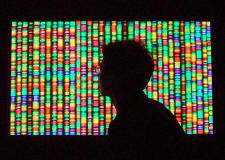20 years after the human genome was first sequenced, dangerous gene myths abound
By Philip Ball,
The Guardian
| 06. 09. 2021
Twenty years ago, the science journal Nature published the first draft of the human genome: the sequence of chemical “letters” on the gene-bearing DNA of our chromosomes. The Human Genome Project (HGP) had laboured for a decade to read this coded information. In a White House press conference in 2000, Francis Collins, who led the project as director of the US National Human Genome Research Institute, waxed biblical, calling the human genome “our own instruction book, previously known only to God”.
The HGP has huge potential benefits for medicine and our understanding of human diversity and origins. But a blizzard of misleading rhetoric surrounded the project, contributing to the widespread and sometimes dangerous misunderstandings about genes that now bedevils the genomic age.
So far, there have been few attempts to set the record straight. Even now, the National Human Genome Research Institute calls the HGP an effort to read “nature’s complete genetic blueprint for building a human being” – the “book of instructions” that “determine our particular traits”. A genome, says the institute, “contains all of the information needed to...
Related Articles
By Stephanie Pappas, LiveScience | 01.15.2026
Genetic variants believed to cause blindness in nearly everyone who carries them actually lead to vision loss less than 30% of the time, new research finds.
The study challenges the concept of Mendelian diseases, or diseases and disorders attributed to...
By David Cox, Wired | 01.05.2026
As he addressed an audience of virologists from China, Australia, and Singapore at October’s Pandemic Research Alliance Symposium, Wei Zhao introduced an eye-catching idea.
The gene-editing technology Crispr is best known for delivering groundbreaking new therapies for rare diseases, tweaking...
By Josie Ensor, The Times | 12.09.2025
A fertility start-up that promises to screen embryos to give would-be parents their “best baby” has come under fire for a “misuse of science”.
Nucleus Genomics describes its mission as “IVF for genetic optimisation”, offering advanced embryo testing that allows...
By Hannah Devlin, The Guardian | 12.06.2025
Couples undergoing IVF in the UK are exploiting an apparent legal loophole to rank their embryos based on genetic predictions of IQ, height and health, the Guardian has learned.
The controversial screening technique, which scores embryos based on their DNA...




